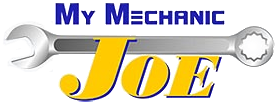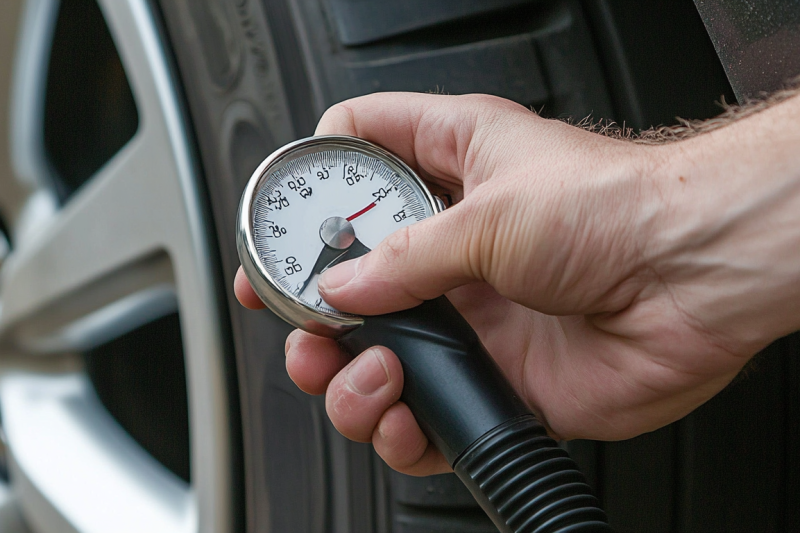Tips for Maintaining Optimal Tire Pressure and Alignment
Table of Contents
- 1 Tips for Maintaining Optimal Tire Pressure and Alignment
- 1.1 Importance of Maintaining Proper Tire Pressure
- 1.2 How to Check and Adjust Tire Pressure
- 1.3 Understanding Tire Alignment
- 1.4 Tips for Keeping Tires Aligned
- 1.5 What is the importance of maintaining optimal tire pressure?
- 1.6 How often should I check your tire pressure?
- 1.7 What is the recommended tire pressure for my vehicle?
- 1.8 How does alignment affect my tires?
Maintaining the right tire pressure and alignment is essential for safe driving and extending the life of your tires. When your tires are in good condition, your car handles better, fuel efficiency improves, and the ride becomes smoother. However, many drivers overlook these critical aspects of vehicle maintenance, leading to avoidable issues on the road.
Keeping your tires properly inflated and aligned enhances performance and is a key safety measure. Incorrect tire pressure can cause uneven wear, reduce traction, and even lead to blowouts, while poor alignment can result in handling problems and increased tire wear. Regularly checking and adjusting tire pressure and ensuring your wheels are correctly aligned can avoid these problems and keep your car running at its best.
In this article, we will delve into the importance of tire pressure and alignment, provide step-by-step instructions for maintaining them, and offer tips to ensure your tires remain in optimal condition. With these practical insights, you can take proactive steps to keep your vehicle safe and reliable on the road.
Importance of Maintaining Proper Tire Pressure
Maintaining proper tire pressure is crucial for several reasons. First, it ensures the safety of your vehicle. Tires that are underinflated or overinflated can affect your car’s handling, making it harder to steer and brake effectively. Properly inflated tires have the right amount of contact with the road, providing better traction and stability, especially in challenging driving conditions like rain or snow.
Secondly, correct tire pressure can significantly enhance fuel efficiency. When tires are underinflated, they create more rolling resistance, which forces your engine to work harder and consume more fuel. Similarly, overinflated tires can wear out unevenly, leading to frequent replacements and unnecessary expenses. By maintaining the right tire pressure, you can save money on fuel and extend the lifespan of your tires, leading to smoother and more economical driving experiences.
The consequences of incorrect tire pressure extend beyond safety and costs. Underinflated tires generate excessive heat, which can lead to blowouts, particularly during long drives or in hot weather. Over time, this can damage your tire’s internal structure, making them unsafe. Overinflated tires, on the other hand, can cause the tread to wear out faster in the center, reducing the overall lifespan of the tire. Both scenarios can compromise the overall performance of your vehicle and lead to more frequent and costly repairs.
How to Check and Adjust Tire Pressure
Checking and adjusting your tire pressure is a simple process that can be done with just a few tools. Here’s a step-by-step guide to help you:
- Find the Recommended Pressure: Check your vehicle’s manual or the sticker inside the driver’s side door to find the recommended tire pressure for your car.
- Get a Reliable Tire Pressure Gauge: You can purchase a tire pressure gauge at any auto parts store. If you don’t have one, many gas stations have them available for use.
- Check Tire Pressure When Tires are Cold: It’s best to check the pressure when the tires are cold, as driving heats them up and can give an inaccurate reading. Remove the valve cap from one of your tires and press the gauge onto the valve stem. Note the reading on the gauge.
- Compare with Recommended Levels: Compare the reading with the recommended pressure for your vehicle. If it’s too low, add air until it reaches the desired level. If it’s too high, release some air by pressing the valve stem with the back of the gauge or another tool until you reach the correct pressure.
- Repeat for All Tires: Don’t forget to check and adjust the pressure on all four tires, as well as the spare tire.
Understanding Tire Alignment
Tire alignment, also known as wheel alignment, involves adjusting the angles of your wheels so they are set to the manufacturer’s specifications. Proper alignment ensures that your tires make appropriate contact with the road, which significantly affects your car’s handling, steering, and overall safety. When wheels are aligned correctly, your vehicle drives straighter, and you experience less tire wear, improving its longevity.
You might need a tire alignment if you notice some warning signs while driving. For example, if your car pulls to one side, it could indicate that your wheels are not correctly aligned. Uneven tire wear is another sign; if one side of the tire is wearing faster than the other, your alignment may need adjustment. Vibrations in the steering wheel, especially when driving at higher speeds, can also signal alignment issues. Regular checks and adjustments can prevent these problems and ensure a smoother ride.
Tips for Keeping Tires Aligned
Keeping your tires aligned involves regular maintenance practices. First, it’s essential to check your alignment periodically, especially if you notice any misalignment symptoms. Many experts recommend checking your alignment at least once a year or every 12,000 miles. Monitoring your tire wear can also help you spot alignment issues early; uneven wear patterns often mean it’s time for an alignment check.
To keep your alignment in good condition, avoid hitting curbs and potholes whenever possible, as these can knock your wheels out of alignment. Regularly rotating your tires can help them wear evenly, which supports better alignment over time. Ensuring your suspension components are in good condition is also vital, as these parts play a significant role in maintaining proper alignment. Maintaining optimal tire pressure is another critical aspect of keeping your wheels aligned correctly, as uneven inflation can lead to alignment issues.
Maintaining optimal tire pressure and alignment is fundamental for the safety, performance, and longevity of your vehicle. By paying close attention to these aspects, you can ensure your car handles better, improves fuel efficiency, and experiences less wear and tear. Proper tire maintenance requires regular checks and adjustments, but the benefits far outweigh the effort involved.
If you’re experiencing any of the signs of misaligned wheels or if it’s been a while since your last alignment check, taking action now can prevent more significant issues later. Regularly checking your tire pressure and inflating your tires to the recommended levels is equally important. These simple steps can make a big difference in your driving experience and vehicle health.
For expert Woodstock auto repair services, including tire pressure and alignment checks, visit My Mechanic Joe in Woodstock, GA. Our skilled mechanics are dedicated to helping you keep your vehicle in top condition. Schedule an appointment with us today to ensure your tires are properly maintained and aligned for a safer, smoother ride.
What is the importance of maintaining optimal tire pressure?
Maintaining optimal tire pressure is crucial for several reasons. First, it enhances fuel efficiency by ensuring that your vehicle operates smoothly, which can save you money on gas. Second, it improves traction, allowing for better handling and control on the road, especially during adverse weather conditions. Lastly, proper tire care prolongs the lifespan of your tires and reduces the risk of tire wear and blowouts, thereby ensuring safety on the road.
How often should I check your tire pressure?
You should check your tire pressure at least once a month and before long trips. Changes in temperature can affect air pressure, so it’s best to inspect them regularly, especially during seasonal transitions. Additionally, you should always check tire pressure when you notice any signs of vibration or when your vehicle starts to pull to one side, which can indicate uneven tire wear.
What is the recommended tire pressure for my vehicle?
The recommended tire pressure can typically be found in the vehicle owner’s manual or on a sticker located in the driver’s side door jam. It is important to follow these specifications to ensure optimal performance and safety. Maintaining proper tire pressure helps prevent uneven wear and extends the overall life of your tires.
How does alignment affect my tires?
Alignment affects your tires significantly. When your vehicle is out of alignment, it can cause uneven tire wear, resulting in the need for premature replacement. Proper wheel alignment ensures that your tires make the best contact with the road, improving both handling and traction. Regular checks can help prevent issues related to potholes or curbs, which can misalign your vehicle.

